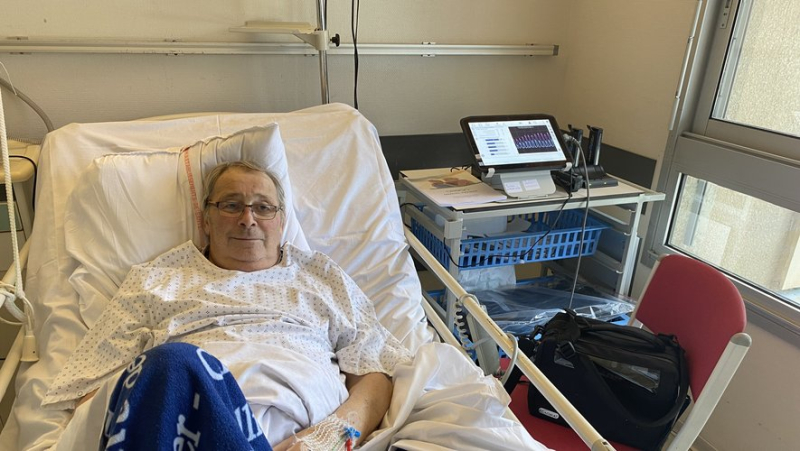Two patients live thanks to a total artificial heart after a transplant at Montpellier University Hospital

Jean-Bernard, aged 70, was the first patient to benefit from an artificial heart in Montpellier, on December 13, 2023. DR – Montpellier University Hospital
The establishment asserts itself in the management of advanced heart failure. It is one of the rare centers authorized in France for the implantation of the Carmat heart. Two patients have already benefited from this latest generation prosthesis.
If around twenty heart transplants take place each year at the Montpellier University Hospital, only two patients have benefited in recent months from the implantation of the Aeson total artificial heart from the French company Carmat, the  ;only approved in Europe.
Aeson is the first physiological artificial heart to be both highly hemocompatible, so as not to alter blood cells, pulsatile, in order to imitate the blood flow of the heart, and self-regulated, thanks to microprocessors and sensors in the prosthesis.
Only around fifty operations of this type have taken place in the world since the first, ten years ago. In France, south of Lyon, only the Montpellier hospital is authorized to perform this type of operation.
"It is intended for patients waiting for a heart transplant or who cannot have one,” explains Professor Philippe Gaudard, head of the heart transplant department. anesthesia and intensive care at the Arnaud-de-Villeneuve hospital at the Montpellier University Hospital.
The two highly technical interventions carried out in Montpellier by Drs Philippe Rouvière and Alexandru Nigolean lasted between 8 and 9 hours, including 4 hours of extracorporeal circulation. Between 10 and 15 personnel, trained in advance, were mobilized each time.
"These are risky gestures that around ten teams in France, only in university hospitals, are capable of carrying out, underlined Professor Patrice Taourel, president of the Medical Commission of’ establishment of the CHU.
For the first time, the interventions carried out in Montpellier were preceded by the placement of a miniature sensor in the patients' pulmonary artery by the cardiology team, in order to follow the evolution of pulmonary arterial pressures.
Postoperative resuscitation is progressive, before the patient goes for rehabilitation. A new life begins, while waiting for a future heart transplant.
Jean-Bernard and Patrick, the first in Montpellier
Jean-Bernard, the first patient, operated on on December 13, 2019, it was held on December 13, 2019. 70 years old. "His situation was deteriorating and he no longer had time to wait for a transplant, explains the Professor. He had breathing difficulties after the operation but he recovered after several months of intensive care. He is currently in a rehabilitation center at the Nîmes University Hospital."
"Before Carmat, I was tired, I was on oxygen constantly, but that wasn't enough. “was more of a life,” he explained to us. last month. When he has recovered, he will become a priority on the waiting lists, according to the protocol established in the clinical study.
Patrick, the second patient, aged 60 years old and originally from Béziers, wasé transplanted on January 23. "He is still in intensive care. He had arrived; in a situation of very advanced heart failure, with repercussions on renal function. He is still on dialysis. He probably would not have survived. the transplantation of a natural heart graft due to the risk of secondary infection."
"The Carmat saved me’ life,” he admitted after his operation. He had come a long way: heart attack in 2011, double bypass, hospitalization in intensive care just before the insertion of the Carmat…
"These patients have been waiting for several months for the program to open " Montpellier, recalls Professor Gaudard. They experienced this operation as a deliverance. We do not yet have any perspective on the longevity of this technology. of the prosthesis. For now, the maximum survival time is two years.
But the prospects are interesting. "There is one graft for every two patients waiting for a heart transplant. The wait can be long. D’où interest in the Carmat heart.




